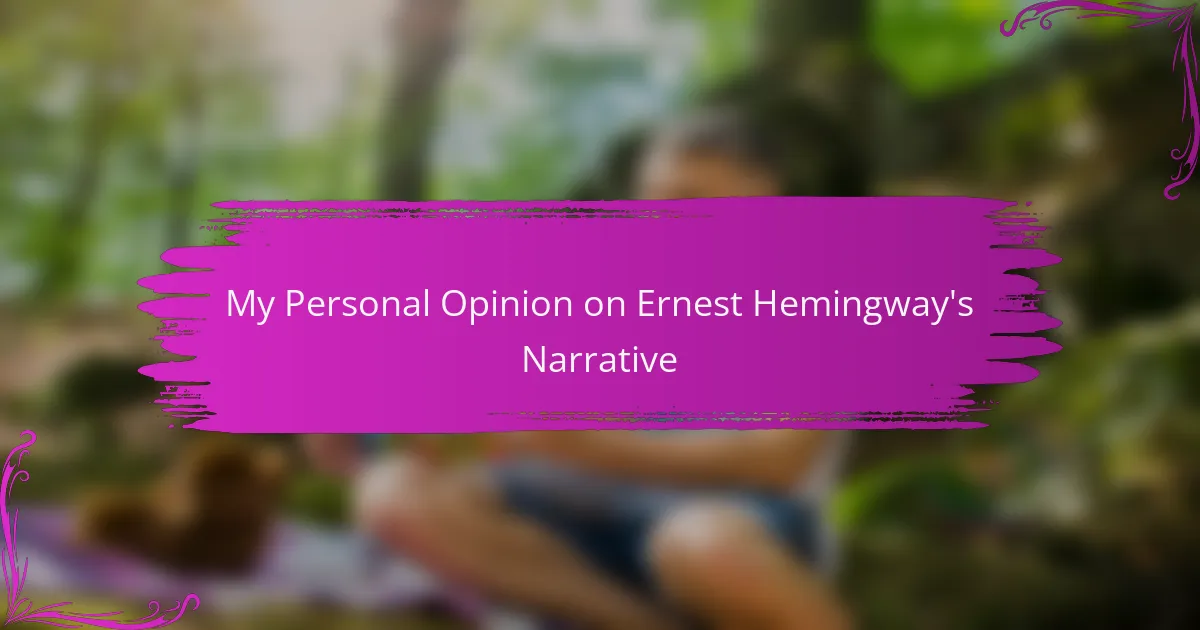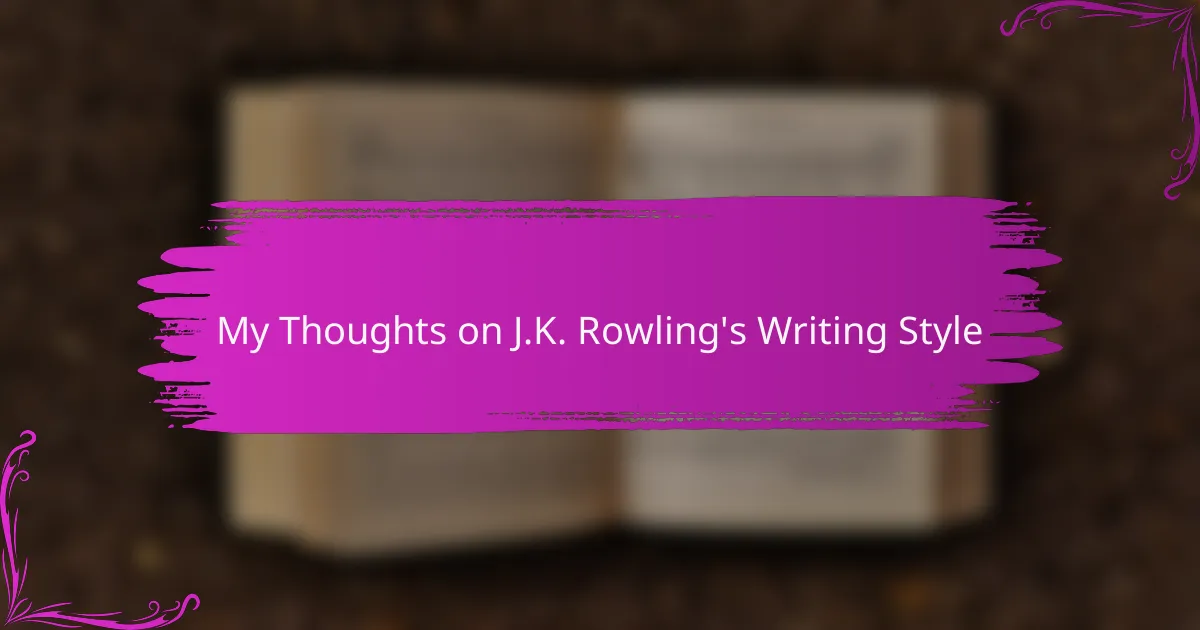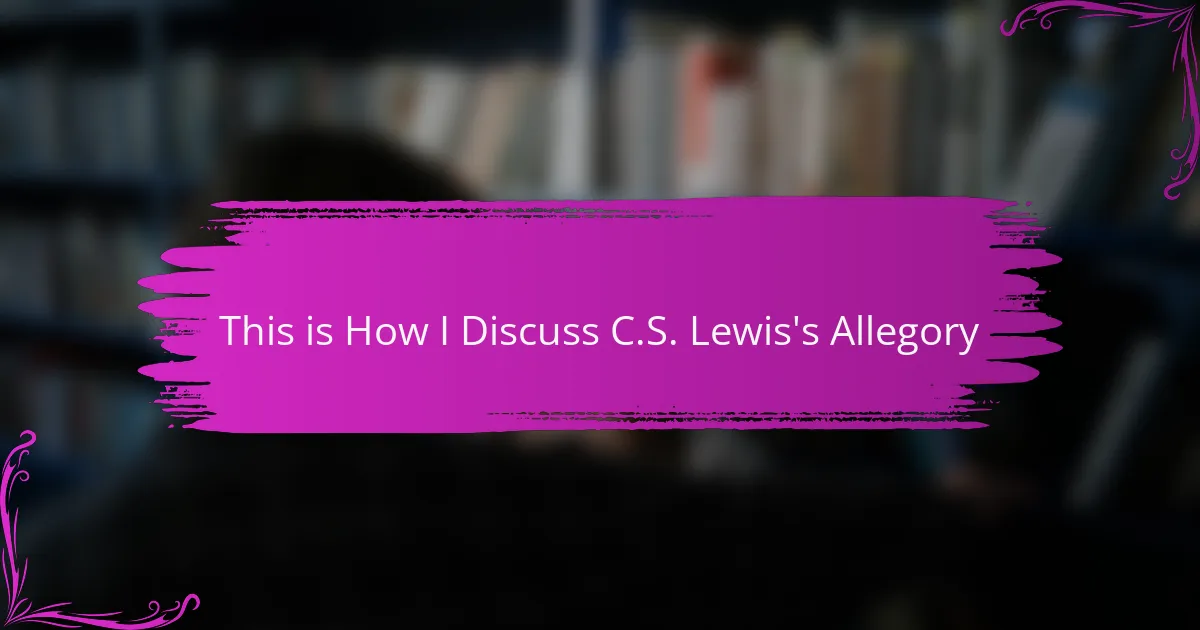Key takeaways
- Hemingway’s writing is characterized by terse, direct language and the “iceberg theory,” encouraging readers to find deeper meanings beneath the surface.
- Key themes in his works include existentialism, isolation, and the complexities of masculinity, provoking introspection and emotional engagement.
- Narrative structure is crucial in literature, influencing how themes are perceived and allowing for multiple interpretations.
- Hemingway’s influence on modern literature lies in his emphasis on simplicity, realism, and deeper emotional expression, shaping contemporary narrative techniques.
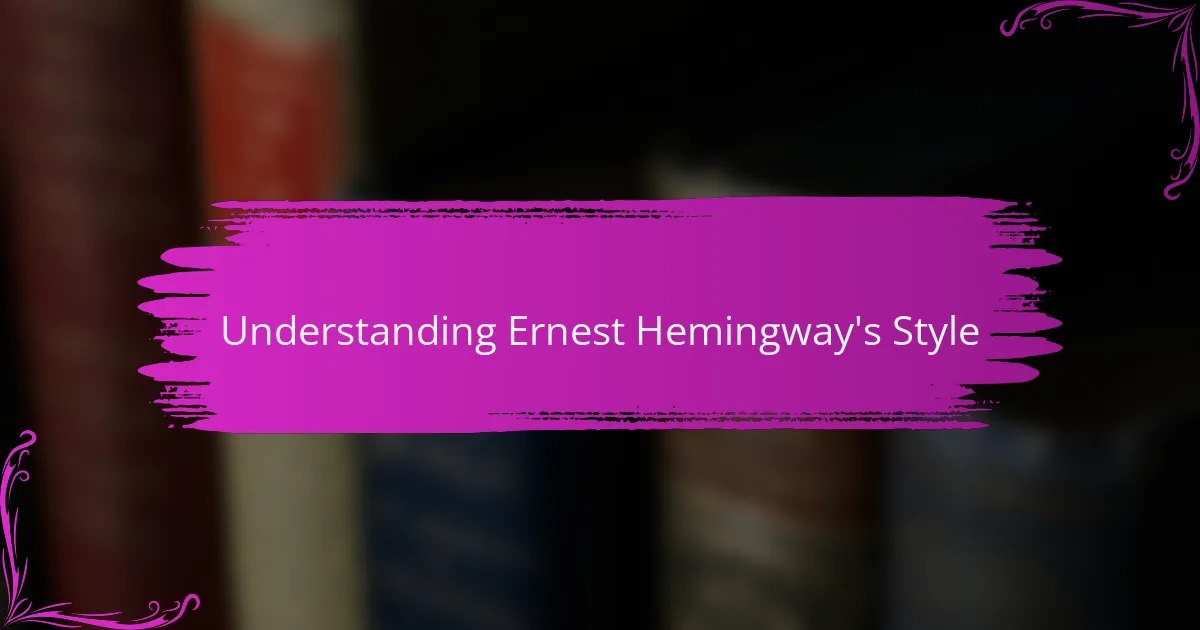
Understanding Ernest Hemingway’s Style
Hemingway’s style is famously terse, often relying on simple, direct language. I remember when I first read “The Old Man and the Sea”; the sparse prose drew me in, making every word feel significant. It’s intriguing how this minimalist approach can convey such depth, leaving readers to explore the emotions beneath the surface.
Another hallmark of Hemingway’s writing is the use of the “iceberg theory.” He believed that the deeper meaning of a story should not be evident on the surface but should be felt by the reader. Have you ever found yourself reflecting on a passage long after reading it? That lingering impact is a perfect example of how his subtlety invites introspection while engaging us on an emotional level.
Additionally, Hemingway’s characters often embody themes of courage and resilience. I find that his protagonists, like Jake Barnes from “The Sun Also Rises,” face their challenges with stoic grace, inviting readers to admire their strength despite their struggles. It’s a reminder that sometimes life’s struggles are best expressed through the unsaid, capturing the complexity of the human experience.

Key Themes in Hemingway’s Works
One of the key themes in Hemingway’s works is the idea of existentialism—the struggle to find meaning in a world often devoid of it. When I read “A Farewell to Arms,” I felt a profound connection to its exploration of love amidst the chaos of war. It made me ponder: how do we find purpose when faced with unimaginable circumstances? This theme resonates deeply, as many of us grapple with similar questions in our own lives.
Another prevalent theme is the concept of isolation. In “The Old Man and the Sea,” Santiago’s solitary battle with the marlin reflects not only his physical struggle but also the emotional distance he feels from the world around him. It struck me how powerful solitude can be, both in its ability to foster self-discovery and in highlighting our connections to others. Don’t you find it fascinating how solitude can lead to profound insights but also intensify our sense of loneliness?
Hemingway also delves into the theme of masculinity and vulnerability. Characters like Robert Jordan in “For Whom the Bell Tolls” illustrate the balance between strength and fragility. I often think about how this portrayal challenges traditional notions of masculinity. It resonates with me, as we are all navigating our own vulnerabilities while trying to uphold our ideals. Isn’t it refreshing to see these complexities reflected in literature?

Importance of Narrative in Literature
Narrative plays a fundamental role in literature, shaping how a story is told and experienced. I remember reading stories where the narrative voice completely transformed my perspective on the characters and their journeys. Have you ever been captivated by a story simply because of the way it was narrated? That connection between narrative style and emotional impact is undeniable.
Through narrative, authors can create atmospheres and build tensions that resonate with readers. For example, I often find myself immersed in a character’s internal struggles when a narrative delves deeply into their thoughts and feelings. It’s fascinating how a well-constructed narrative can evoke empathy and foster a shared understanding of the human experience, drawing us closer to the characters we grow to know.
Moreover, the structure of a narrative influences how we interpret themes and messages within a text. I think about novels that unfold non-linearly, constantly challenging me to piece together the story. This complexity not only engages the mind but also allows for multiple meanings, encouraging diverse interpretations. Isn’t it thrilling to unravel a narrative that leaves you pondering long after you close the book?
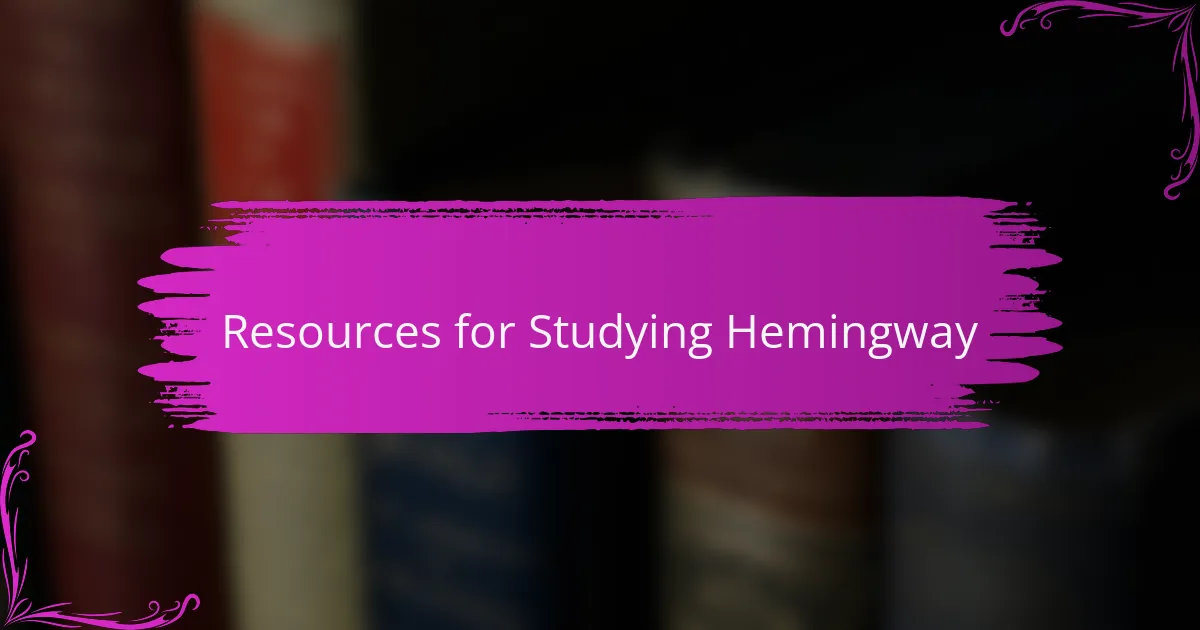
Resources for Studying Hemingway
Exploring Hemingway requires a thoughtful approach, and there are several fantastic resources to deepen your understanding. I’ve found that reading critical essays, like those in “The Cambridge Companion to Hemingway,” provides insightful perspectives on his narrative techniques. Have you ever had an “aha” moment while reading an analysis that changed how you viewed a character or theme? It’s remarkable how different interpretations can open new doors to understanding his work.
Another invaluable resource I recommend is joining a book club focused on Hemingway’s novels. Discussing his stories with others can spark conversations that reveal layers you might not notice on your own. I remember a lively discussion about “A Farewell to Arms,” where different interpretations of love and war emerged. Engaging with others not only enhances your comprehension but also makes the reading experience more enjoyable.
Lastly, don’t overlook the power of documentaries and interviews with Hemingway scholars. Watching “Hemingway,” the Ken Burns documentary, enriched my appreciation for his life and the context of his writing. I find that visual resources often provide a compelling backdrop, making his prose resonate even more. Have you ever been captivated by a documentary that brought a writer’s world to life? It can truly deepen your connection to their literature.
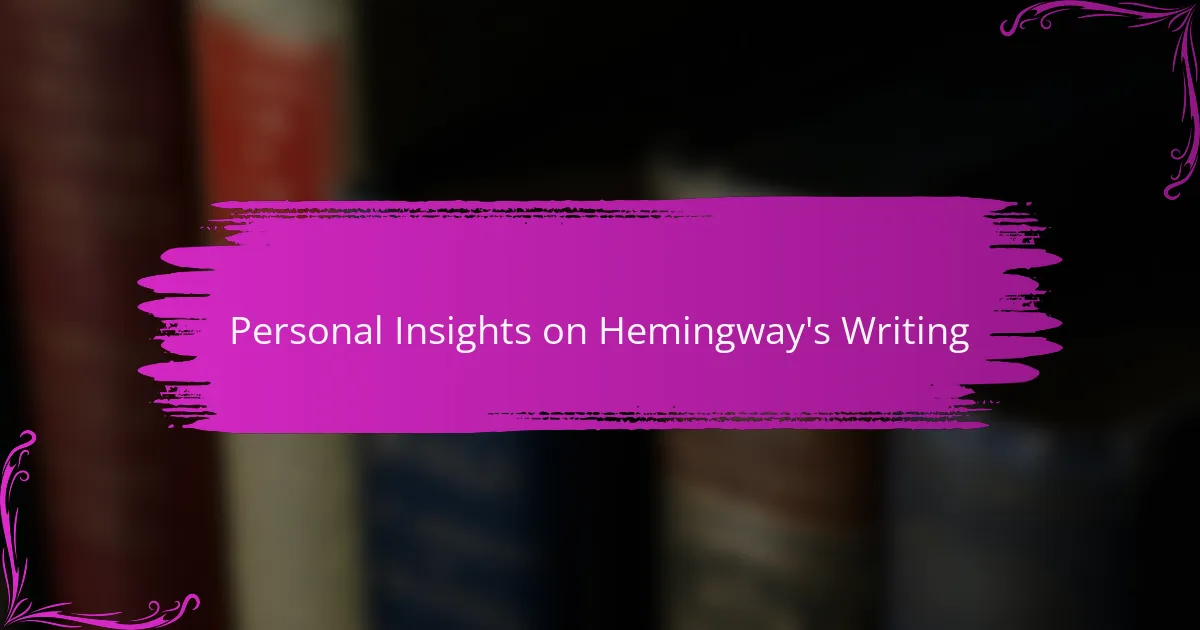
Personal Insights on Hemingway’s Writing
Hemingway’s narrative is deeply impactful, and I often find myself drawn to the way he crafts his stories. His characters, with their raw honesty and simplicity, seem to leap off the page and into my thoughts. It’s as if I’m sitting in a café with them, sharing a moment rather than just reading about their lives. Have you ever felt that kind of connection to a character? It’s a testament to Hemingway’s skill in creating relatable and complex individuals.
There’s something undeniably powerful about Hemingway’s choice of dialogue. I remember how the conversations between characters often reveal more than their actions ever could. For instance, in “The Sun Also Rises,” the exchanges feel so genuine that they resonate with my own experiences. In many ways, this dialogue mimics real life, making me reflect on the things left unsaid. Don’t you think it’s fascinating how much can go unspoken, yet feel profoundly understood?
Additionally, I admire the way Hemingway’s prose mirrors the themes of his work. His sentences, while straightforward, sometimes carry an emotional weight that lingers long after I’ve finished reading. When I encounter the recurring motifs of loss and longing, I recognize my own experiences echoed in his words. It makes me wonder: how can literature so simple also be so profoundly complex? This duality is something I cherish in Hemingway’s writing, leading me to explore my own emotions with greater depth.
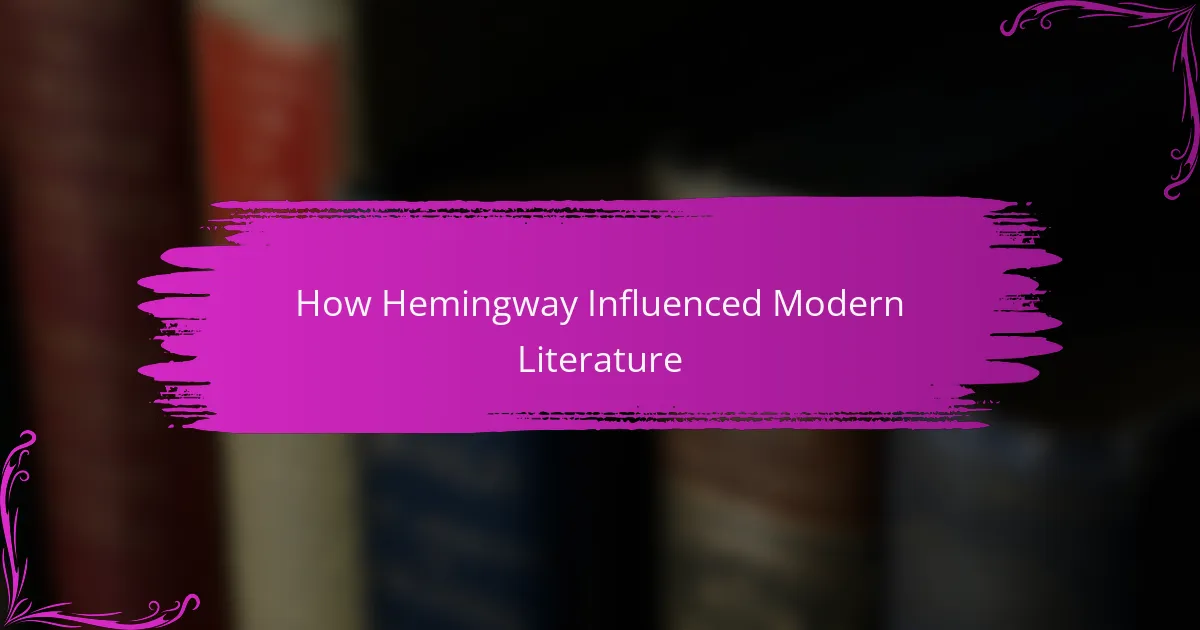
How Hemingway Influenced Modern Literature
Hemingway’s influence on modern literature is profound and multi-faceted. His distinctive style, marked by succinct prose and understated emotion, encourages writers to convey depth through simplicity. I recall reading “The Old Man and the Sea” in high school; Hemingway’s ability to encapsulate the human struggle and resilience left a lasting impression on me, shaping how I view narrative depth.
Moreover, his technique of using the iceberg theory—where much of the story lies beneath the surface—has inspired countless authors to explore subtext and nuanced storytelling. This approach resonates deeply with me; it’s fascinating to see how what’s not said can often be just as powerful as the words on the page.
Additionally, Hemingway’s emphasis on authentic emotion rather than flowery language has paved the way for writers to focus more on genuine experiences. This shift towards realism in literature is something I’ve embraced in my own writing journey.
| Hemingway’s Techniques | Influence on Authors |
|---|---|
| Iceberg Theory | Encourages deeper subtext exploration |
| Simplified Prose | Promotes authentic emotional expression |
| Focus on Realism | Encourages personal experiences in narratives |
